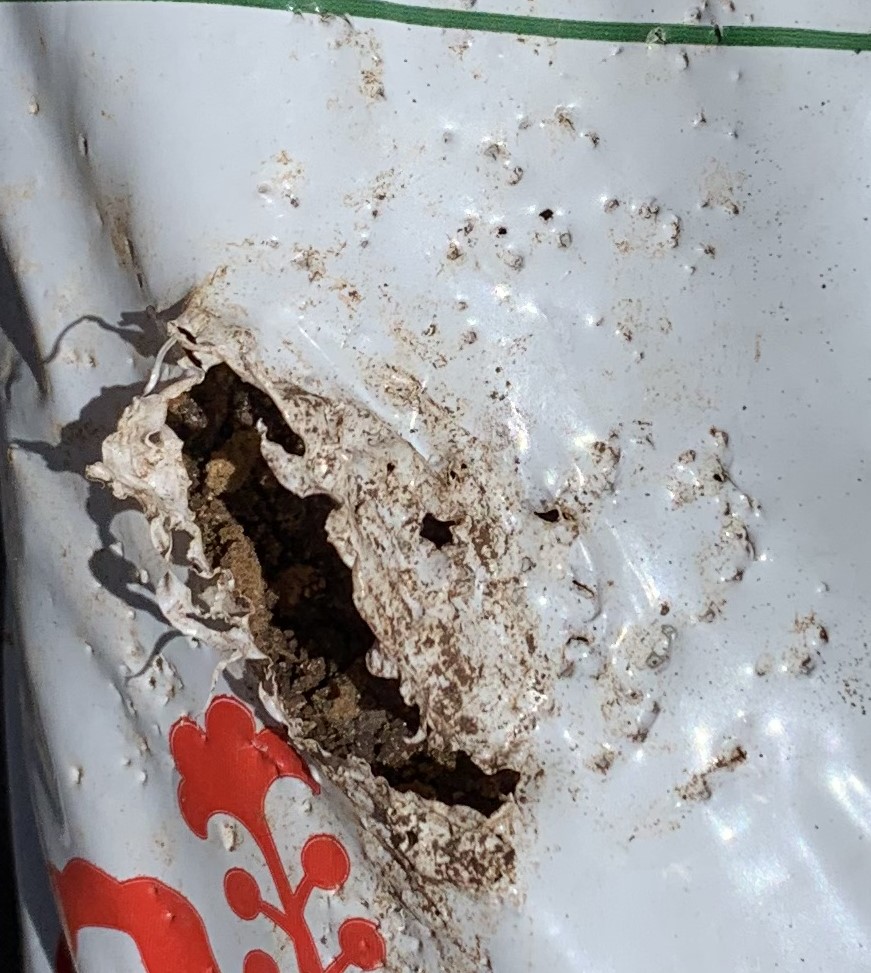Coconut Rhinoceros Beetles found in Waikoloa on Hawaiʻi Island
Three live adult coconut rhinoceros beetles (CRB) have been detected in traps in the Waikoloa area on Hawai‘i Island. The captures during the past week were the first detections of adult CRB on the island since six grubs (larvae) were found in October 2023, in a decaying palm tree by a resident in Waikoloa Village.
More than 80 detection traps were deployed on Hawai‘i Island by multiple state agencies and are routinely checked by HDOA Plant Pest Control staff and members of the Big Island Invasive Species Committee. Additional traps have been deployed by the US Department of Agriculture and community groups. The traps are used for early detection of CRB infestations and are not effective in reducing populations of the beetle.
On April 15, the detection of a single beetle was reported in a “camera trap” at the West Hawai‘i Landfill by the University of Hawai‘i’s Coconut Rhinoceros Beetle Response, which developed the camera traps that take pictures on a routine basis and sends the images through a cellular signal. HDOA’s PPC was notified and retrieved the male beetle from the trap which had been initially deployed by the USDA.
On April 22, HDOA was notified by the BIISC that two adult CRB were found in traps at the Waikoloa Dry Forest Reserve. Those traps had been deployed by members of the Waikoloa community.
To supplement HDOA workforce in West Hawai‘i, staff from the Plant Quarantine Branch from O‘ahu flew over to assist in confirming the location of the CRB detections and to conduct additional surveys.
“Unfortunately, detections of live adult beetles are an indication that CRB are breeding in the Waikoloa area,” said Sharon Hurd, chairperson of the Hawai‘i Board of Agriculture. “We ask that residents pay special attention to mulch and green waste that serve as optimum breeding conditions and report any suspected CRB or suspected CRB damage in palm trees. We need everyone’s eyes.”
West Hawai‘i residents may report suspected CRB to the state’s toll-free Pest Hotline at 808-643-PEST (7378). Plant Quarantine inspectors in Kona will follow up and provide further instructions.
Prior to the recent detections in Waikoloa, HDOA PPC and the CRB Response Team had already scheduled extensive surveying and treatment activities for the beginning of May. Plans are being developed to try new methods of treatment for palm trees. Additional detection traps will be deployed, including a new generation of smart traps.
HDOA’s Pesticides Branch applied for and received a crisis emergency exemption from the US Environmental Protection Agency to treat palms with the pesticide, cypermetherin, which has been found to be effective in killing CRB. The EPA has only authorized its use in the counties of Maui, Kaua‘i and Hawai‘i.
On Hawai‘i Island, PQB inspectors have been on heightened alert for any mulch or compost material arriving on the island. Such materials transported from O‘ahu to neighbor islands are required to be heat treated or fumigated prior to shipping to kill any CRB.
Suspected CRB on Maui, Hawai‘i Island and Kaua‘i should be reported to the State’s Pest Hotline at 808-643-PEST (7378). More information on CRB may be found at: https://www.crbhawaii.org/
Background
CRB were first detected in Hawai‘i in December 2013 on O‘ahu, where they have gradually spread to areas around the island.
CRB are a serious pest of palm trees, primarily coconut palms, as the adult beetles bore into the crowns of the palms to feed on the tree’s sap. New unopened fronds are damaged in this way and when fully opened, may break and fall unexpectedly. If CRB kill or damage the growing point of the palm, the tree may die. Secondary fungal or bacterial pathogens may also attack the wounds caused by CRB, thereby killing the tree as well. Tree mortality after CRB attack has been reported to be anywhere from 10% to 50%. Dead trees then become a safety hazard as they may fall unexpectedly after the trunk rots, potentially resulting in bodily injury or property damage.
It is a major pest of palms in India, the Philippines, Palau, Fiji, Wallis, Nukunono, American and Western Samoa and Guam. It is still not known exactly how the beetles arrived in Hawai‘i.




















